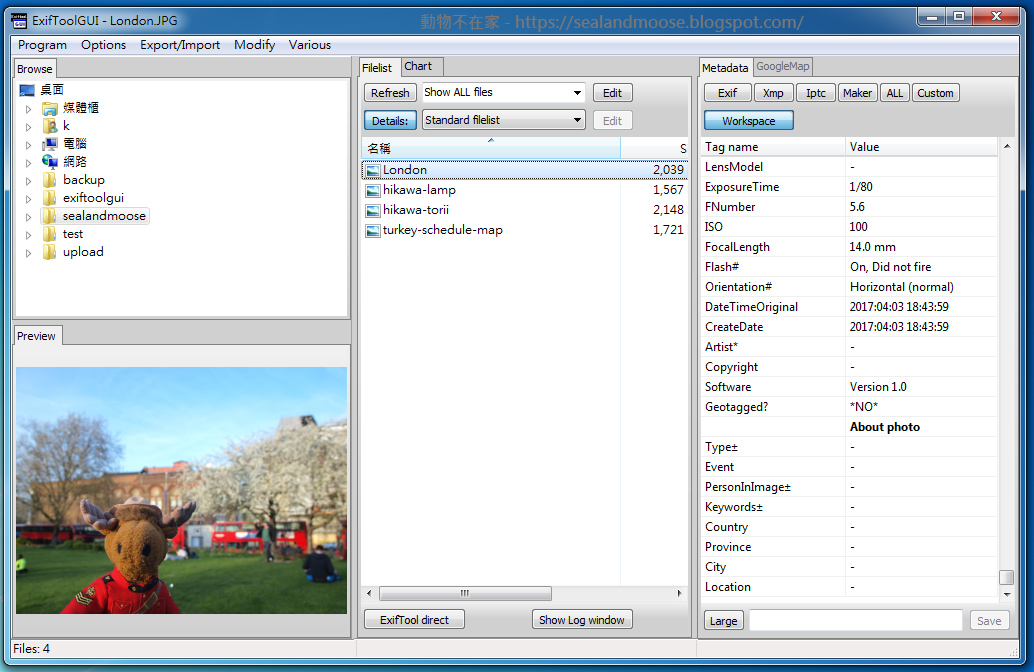
Now you can read and edit the metadata of any media file on your system. Finally, you can drag the thumbnail of the photo over to the ExifTool.Drag the new shortcut into this folder.Then make a new folder on the Desktop with a name like “Remove EXIF.”.Make a desktop shortcut just like before.Now right-click the copied file and select the Rename option to edit its name.In the same folder, paste the file to create its copy.Open the folder where you extracted ExifTool and copy the executable file.Now to edit the metadata, follow the below-mentioned steps according to the operation you wish to perform. The tool will run and provide you with a list of the file’s metadata in a CMD window.Īfter this, the warning window will not appear, and the tool will run perfectly to give you information about your media files. Click More Info in the pop-up, followed by Run anyway in the next window. Note: The first time you try to do this, your system will interrupt you with a warning pop-up. Next, you have to right-click on that file and select the “ Send to > Desktop” option to create a shortcut for it on your computer’s desktop.Īfter setting up the software, you have to drag the thumbnail of the file you wish to edit from the directory in which it is stored to the desktop shortcut for ExifTool, as shown in the next screenshot. The extracted file will consist of an executable named ExifTool(-k).exe. Move it to a convenient folder and extract the contents by right-clicking on it and selecting the Extract All option.
Exiftool mp4 software#
The software will be downloaded in the form of a zip file.
Exiftool mp4 download#
To edit a video file’s metadata, first, download the ExifTool tool from its official website. The following image will help you understand what file metadata looks like in ExifTool.
Exiftool mp4 how to#
How to edit or fix photo and video Metadata using ExifTool Moving on, let’s learn how to edit video metadata or remove it with ExifTool. We can list endless more uses of this tool, but today, let’s stick to the ones mentioned above since they are primarily related to metadata. Add custom user-defined tags in media files.Process media files based on the value of any Meta information.Automatically back up the original image when writing a file.Create binary-format metadata (MIE, EXV) files for metadata backup.Delete meta-information individually, in groups, and even altogether.Copy Meta information between files of different formats.Generate track logs from Geotagged images in different formats.


And, given the vast collection of file formats and types of metadata it supports, Exiftool is a great solution for Meta tag modification. Technically, it is an open-source Perl library written by Phil Harvey. What is ExifTool?įirst released in 2003, Exiftool is a command-line utility program. There are several ways to edit photo metadata, but you can easily edit or fix photo and video Metadata using ExifTool. So, for safety measures, you should always check and modify the metadata of your files before you post them online. Naturally, when you upload such media files on the internet, you’re sharing personally identifiable data in the form of this metadata. But the purpose it is used for can differ from person to person for example, photographers use this data to inspect various elements of a photo or video, such as the camera make, model, ISO, aperture, etc… In contrast, home users make use of it to remember when they captured certain precious moments. Metadata is useful in many ways, especially when searching or representing data. Smartphones also do the same, adding extra tags such as GPS data to show exactly where the photo was captured. For example, cameras add data about the manufacturer and its settings in a section outside the image data.


 0 kommentar(er)
0 kommentar(er)
